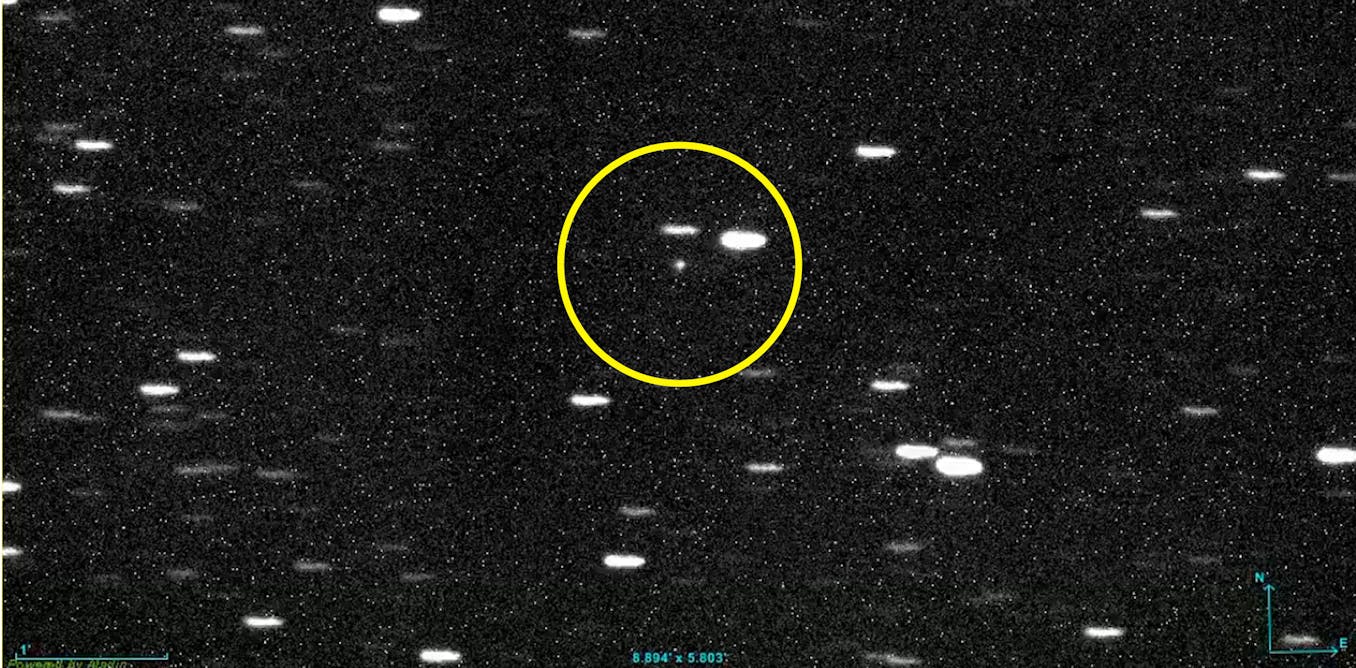- Get link
- X
- Other Apps
- Get link
- X
- Other Apps

A New Interstellar Traveler Spotted Zipping Through Our Solar System: Meet I3/ATLAS
The cosmos never ceases to amaze, and this week brings thrilling news from the realm of astronomy! Scientists have confirmed the detection of a new interstellar object, the third of its kind, making its way through our Solar System. This cosmic visitor, temporarily named A11pl3Z, has now been officially designated as I3/ATLAS.
The discovery was initially made by the Asteroid Terrestrial-impact Last Alert System (ATLAS) on July 1st. Confirmation came swiftly from experts at NASA’s Center for Near Earth Object Studies and the International Astronomical Union (IAU), solidifying its interstellar status.
What Makes I3/ATLAS an Interstellar Object?
Several key characteristics point towards I3/ATLAS originating from beyond our Solar System:
- Blazing Speed: It's hurtling through space at an incredible 245,000 kilometers per hour. This velocity far exceeds what's needed to escape the Sun's gravitational pull. To break free from the Solar System near Earth's orbit, an object only needs to travel at just over 150,000 km/h.
- Highly Eccentric Orbit: Its orbit around the Sun is exceptionally eccentric, meaning it's far from circular. Eccentricity is measured on a scale where 0 is a perfect circle, and values up to 1 represent increasingly elongated ellipses. An eccentricity above 1 indicates an unbound orbit. I3/ATLAS boasts an estimated eccentricity of 6.3 – the highest ever recorded for an object within our Solar System.
A History of Interstellar Visitors
This isn't the first time we've had the privilege of hosting interstellar travelers. Previously, we've encountered:
- ‘Oumuamua (2017): The first interstellar object detected, ‘Oumuamua, was a cigar-shaped enigma discovered by the Pan-STARRS1 telescope in Hawaii.
- 2I/Borisov (2019): This comet was discovered by amateur astronomer Gennadiy Borisov, marking the second confirmed interstellar visitor.
Interestingly, the confirmation of I3/ATLAS's interstellar origin happened much faster than its predecessors, highlighting our growing ability to identify these objects.
Where Did I3/ATLAS Come From?
With only three interstellar visitors observed so far, pinpointing their exact origins remains a challenge. However, research suggests they may originate from relatively nearby star systems, such as Alpha Centauri, our closest interstellar neighbor at just 4.4 light-years away.
One theory suggests that Alpha Centauri, as it slowly moves closer to our Solar System, could be ejecting material, potentially sending a million objects larger than 100 meters in diameter into our cosmic neighborhood.
Why is This Discovery Significant?
The discovery of I3/ATLAS, and other interstellar objects, is incredibly important because:
- Rare Glimpses into the Galaxy: They offer unique insights into other star systems and the materials that exist beyond our own.
- Expanding Our Knowledge: Each confirmed object adds to our understanding of their nature, how they traverse space, and their potential origins.
- Advancing Technology: New observatories like the NSF–DOE Vera C. Rubin Observatory are revolutionizing our ability to detect these elusive objects, potentially turning rare discoveries into routine ones.
What's Next for I3/ATLAS?
Currently, I3/ATLAS is classified as a comet, although some scientists believe it might be an asteroid, approximately 20km in diameter. Further observations will be crucial to confirm its true nature. As of now:
- Inbound Trajectory: It's currently inside Jupiter's orbit and heading towards the Sun.
- Closest Approach: It's expected to reach its closest point to the Sun on October 29th, slightly closer than Mars.
- Earth Flyby: After its solar rendezvous, it will swing back out towards deep space, making its closest approach to Earth in December (posing no threat).
Whether comet or asteroid, I3/ATLAS is a messenger from another star system, offering a tantalizing glimpse into the vastness and diversity of our galaxy. As our observational capabilities continue to improve, we can anticipate discovering more interstellar companions, enriching our understanding of the cosmos and our place within it.
Tags: Interstellar object, 3I/ATLAS, Space, Astronomy, NASA, Solar System, Cosmic interloper, Asteroid, Near Earth Object, IAU
Source: https://theconversation.com/astronomers-have-spied-an-interstellar-object-zooming-through-the-solar-system-260422
3I/ATLAS
Asteroid
astronomy
Cosmic interloper
IAU
Interstellar object
NASA
Near Earth Object
solar system
space
- Get link
- X
- Other Apps
Comments
Post a Comment